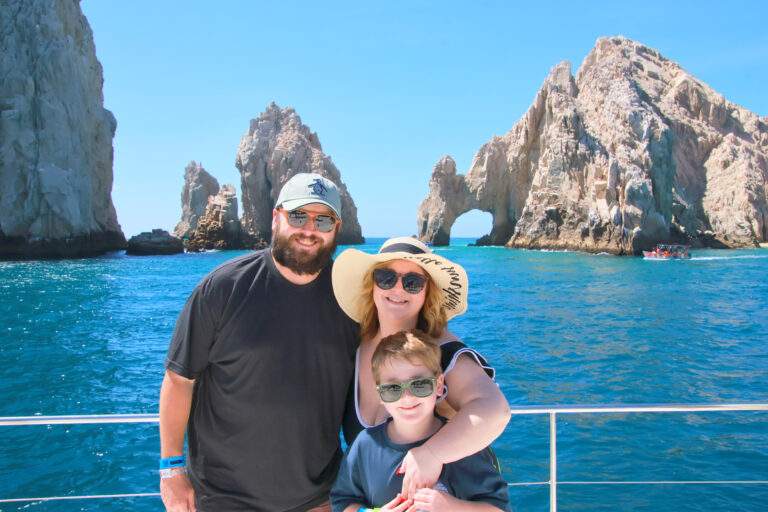We recognize that Disney vacations are not just an investment, but often the highlights of our lives, and we take that responsibility seriously. We want to ensure you have the best vacation experience.
Interested in a job in travel? Click here to learn: How to Become a Disney Travel Agent
Overview
Introduction
Located 35 mi/60 km northwest of Gdynia, the resort of Leba (pronounced WAY-ba), Poland, has tall, Sahara-like sand dunes and long, broad, pretty beaches.
Much of the area is within the Slowinski National Park, where you can walk, bicycle or take a carriage. Several campgrounds (with wooden cabins for rent) are nestled among the pine forests. Avoid summer weekends, however, unless you like crowds—that's when Leba is overrun with holidaymakers (the beaches are considered some of the cleanest in Poland).
You can follow the beach to the village of Czolpino (refreshments and camping available). Farther south (5 mi/8 km) is Smoldzino, which has a natural history museum (Muzeum Przyrodnicze).
Overview
Introduction
Lebanon offers an array of scenic and historical sights. In the capital, Beirut, visitors return again and again to the Corniche, a wide shoreline promenade that's representative of Lebanon—full of charm and contradictions. It's a good spot to watch the spectacle of Beirutis of all faiths, factions and ages strolling, jogging and skating by. There and elsewhere in the city, you'll realize that east and west not only meet, they dance.
The country isn't large, and day trips to historic coastal towns and lovely mountain villages are easily made from Beirut. In Jbail (Byblos) you can walk among the remains of several civilizations, and in Bcharre you can hike in a deep gorge or relax in a grove of graceful cedars. When it comes to skiing, you have your choice of water or snow, depending on the season.
Geography
Lebanon's diverse terrain is packed into a relatively small area: The 135-mi/215-km Mediterranean coastline stretches along a narrow, flat plain that gives way to the Mount Lebanon range, where the tallest peaks are covered in snow in the winter. Another range, the Ante-Lebanon, runs farther east along the border with Syria. The fertile Bekaa Valley lies between the two ranges.
History
A big part of Lebanon's allure is its rich history. Many civilizations—Phoenician, Amorite, Egyptian, Hittite, Persian, Greek, Roman and Turkish—ruled over the land. The mountainous terrain also provided refuge for various religious groups that played significant roles in the development of the country. Today the country abounds with historical attractions.
Modern Lebanon was created as a French colony from pieces of the Ottoman Empire at the end of World War I. In 1943, Lebanon gained full independence from France, and the new nation was held barely intact by the National Pact, an informal agreement that granted political offices to major groups (Christian Maronites, Sunni Muslims, Druze).
Tensions grew as demographics changed: Hundreds of thousands of Palestinian refugees entered the country after the creation of Israel in 1948, and Shiite Muslims became the largest religious sect. The country tried to reconcile its pro-Arab and pro-Western sentiments, but a brutal, multisided civil war broke out in 1975. Israel invaded twice, in 1978 and 1982. Syria also intervened militarily. (Syrian troops were only withdrawn from Lebanon in 2005.) A cease-fire was declared in 1990, and by 1992 most of the fighting had stopped.
Although much rebuilding has taken place in Beirut, the scars of the civil war remain. The assassination of former Prime Minister Rafiq Hariri in February 2005 and the 34-day war with Israel in July 2006 devastated Lebanon's economy and infrastructure, bringing tourism to a halt. While tensions continue throughout the region, the tourism industry is back on the upswing, bringing a growing number of American visitors in addition to the constant flow of regional and European tourists.
A growing trend is the number of people returning to the country to connect with their roots and meet family, perhaps even for the first time. Construction in the city centers is booming, with cranes interspersed between high rises. Still, many neighborhoods are actually refugee camps filled with displaced Palestinians, although tourists are more likely to stroll through lavish shopping streets and historic monuments instead.
Snapshot
Lebanon's main attractions are historic sites, fine dining and people-watching in Beirut, diverse cultural attractions, Baalbek, Middle Eastern cuisine, archaeological ruins, pleasant Mediterranean climate, skiing and mountain scenery.
Lebanon will appeal to adventurous travelers who want to explore Middle Eastern history and culture.
Potpourri
The number of famous cedars reached dangerously low levels well before the modern era—they have been a big export item since Phoenician times. It's believed that cedars from Lebanon were used in building tombs in Egypt and Solomon's Temple in Jerusalem.
Another ancient resource was the murex, a type of mollusk used in making purple dye. Sidon and Tyre grew rich off of the dye, but they also overharvested the murex, causing its eventual
extinction.
Neither of Lebanon's top universities teaches in Arabic: The American University in Beirut is English-language; the Universite de St. Joseph is Francophone.
Lebanon is home to famous sites referred to in the Bible: Cana (or Qana), in southern Lebanon, was the place where Christ changed water into wine, and Khalde is where Jonah was released from the body of the great fish.
The only significant Omayyad (early Arab) ruins in the country are at Aanjar, in the southern Bekaa Valley.
The Lebanese love their cars: The roads around Beirut are literally clogged with vehicles. You'll see women behind the wheels of many of those automobiles, an indicator of their relative equality in this Middle Eastern country.
There's good skiing December-April, particularly at the Faqra Club and the resorts on Mount Makmal. The Cedars at Bcharre is also popular.
Sidon, which was the capital of the Phoenicians, was destroyed at the fall of that civilization. But it wasn't sacked by the conquering Persians: The Phoenicians destroyed it themselves rather than let it fall into the hands of their enemy.
About 93% of Lebanese consider themselves Arabs, and about 60% of those are Sunni or Shiite Muslim. The remaining 40% are Maronite or Orthodox Christians of various denominations. Most non-Arabs in Lebanon are Christian Armenians. The proportion of Christians is gradually falling due to emigration and varying birth rates.
Lebanon has a higher percentage of skilled laborers than any other Arabic nation.
Before the civil war broke out, Lebanon was considered the financial and commercial capital of the Middle East. Beirut was the publishing capital for the Arab world.
Lebanon produces excellent wines, notably Chateaux Kefraya, Ksara and Musar. They're not just locally famous: You'll find them on the wine lists of tony restaurants in Europe and elsewhere.
































